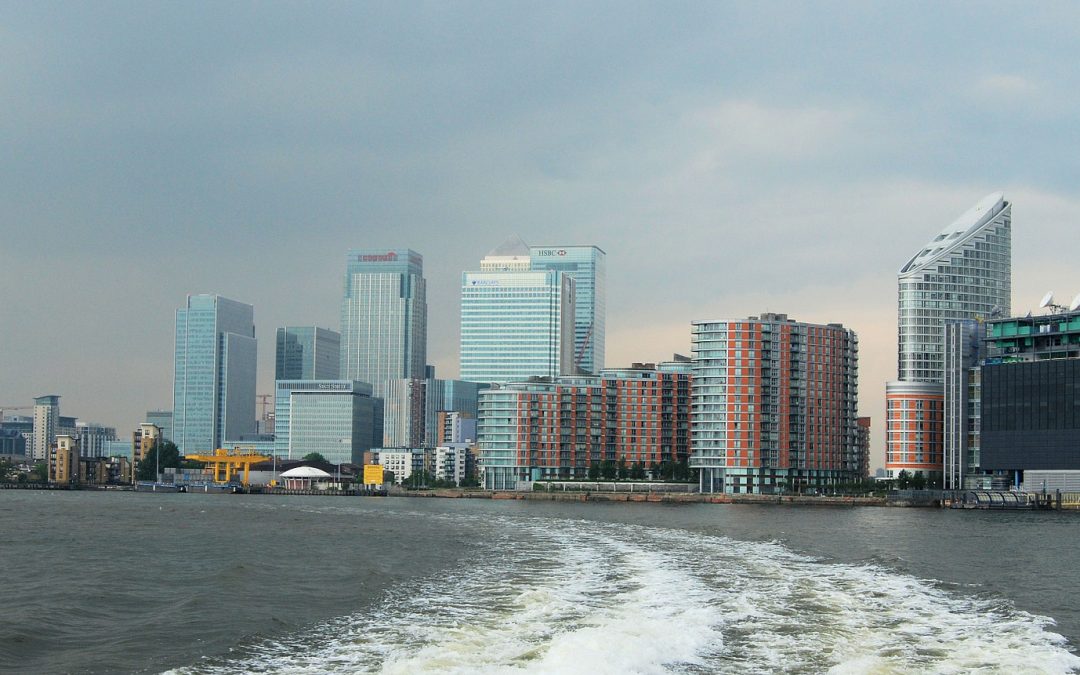The Lambeth Group Rocks
Geotechnical • Industry matters
 The Lambeth Group is a set of rock strata found under the London and Hampshire Basins. Comprised of complex vertically and laterally varying gravels, sands, silts and clays deposited 55 million years ago, this ‘layer-cake’ geology presents a variety of ground engineering challenges. Ground & Water engineer, Alex Stratford, explains why.
The Lambeth Group is a set of rock strata found under the London and Hampshire Basins. Comprised of complex vertically and laterally varying gravels, sands, silts and clays deposited 55 million years ago, this ‘layer-cake’ geology presents a variety of ground engineering challenges. Ground & Water engineer, Alex Stratford, explains why.
Considering the Lambeth Group is a comparatively thin formation – less than 50m thick – you would imagine it is likely to be relatively easy to engineer and work with. However… Due to the highly variable nature of this formation and that it outcrops and underlies much of the London and Hampshire Basins, (BGS Entwisle et al 2013) it is an essential and curious topic for discussion and one well worth understanding.
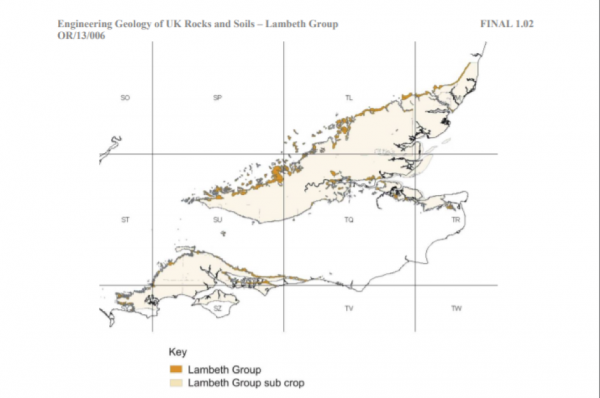
The map above shows the location of the Lambeth Group
The difficulty of predicting the physical properties of the rock, especially where water bearing sand layers occur within stiff clay, presents significant engineering problems. (BGS Entwisle et al 2013) These problems increase to considerable, especially within the London area with its highly variable developments including multi storey buildings, tunnels and other large scale engineering projects.
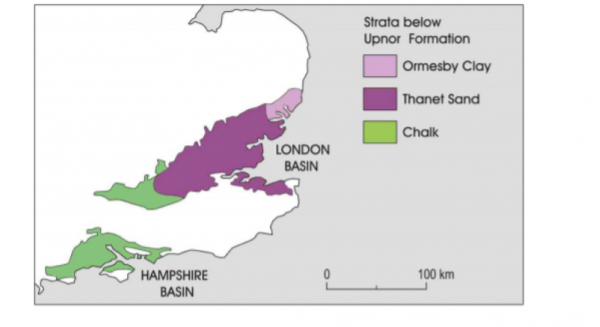
The map above shows the geology underlying the Lambeth Group
Geology of the Lambeth Group
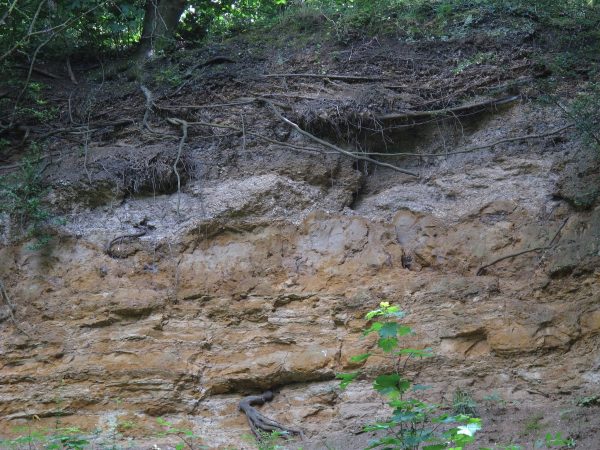
https://commons.wikimedia.org/wiki/File:Lambeth_Group_Gilbert%27s_Pit.jpg Mike Norton
The Lambeth Group (formerly known as the Woolwich and Reading Beds) is sedimentary complex, comprising a basal bed (the Bottom Bed) composed of glauconitic sand, sandy clay and gravel, with laterally variable sand and clay above. In the eastern part of the area the basal bed is mostly overlain by a shelly grey sandy clay or silty sand. Lignite (brown coal) a carbonaceous rock composed of plant remains which has not been subject to the same intensity of heat and pressure as has ordinary coal, is occasionally found within the Lambeth Group, as are individual logs and groups of logs indicating the position of a former log jam, which was covered by sand and clay at the time of deposition. Due to the variable nature of the formation and the boundary with underlying geologies which include the Thanet Formation and chalk to name a few, it is easy to understand why engineering within this group is particularly difficult.
Common engineering problems associated with the Lambeth Group include:
- Rapid changes in lithology (physical properties of rock)
- Clay with irregular water bearing sand bodies
- Perched water tables
- Hard bands that obstruct drilling, piling and boring
- Flint gravel beds which are water bearing and may restrict boring progress and increase wear of cutting equipment
- Lignite which may provide differential settlement
- Deposits infilling dissolution features in the underlying chalk
- Fissuring of clay, potentially leading to instability in cuts
- De-oxygenation of atmosphere in tunnels cut into Upnor formation sands.
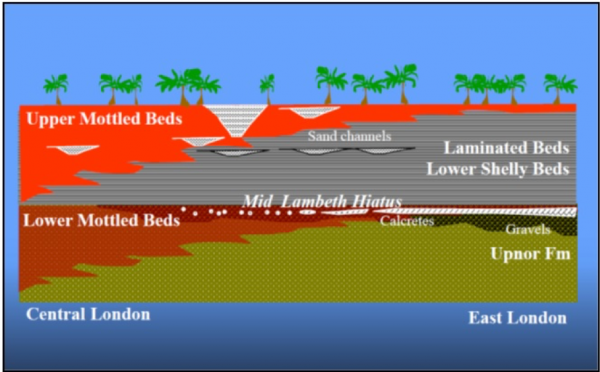
Depositional environment of the Lambeth Group
The geotechnical properties of the Lambeth Group are highly variable which makes engineering judgment and understanding of this formation very important. Data compiled by the British Geological Survey (BGS) for site investigation works shows how variable it can be. The plasticity index for the Lambeth Group is between low and very high but considered generally to be low to medium. Particle size distribution testing indicates samples vary between clays and slightly sandy, gravelly cobbles. SPT’s undertaken within the Lambeth Group are highly variable with values of between 3 and 232 being recorded (BGS Entwisle et al 2013). One note is that tests within the Lambeth Group have lower completion rates compared to other formations such as the London Clay Formation. This is probably due to the hard bands and variable nature of the formation.
Where the Lambeth Group overlies chalk deposits subsidence can be an issue. Karstic features (sub-surface enlarged fissures, buried sinkholes, caverns, etc.) within the chalk can cause the Lambeth Group to subside within these features. This is potentially problematic for foundation design and the design of soakaways. Other possible issues relate to groundwater or burst water pipes causing karstic features within the underlying chalk.
Groundwater can also pose a problem in the Lambeth Group, where lignite is present. The mobilisation of pyrite materials can give rise to sulphate rich waters, which can cause damage to concrete foundations after oxidisation (BGS Entwisle et al 2013). From a geotechnical point of view the formation can provide poor geotechnical foundation conditions.
 A number of large-scale engineering projects have had to be engineered taking the Lambeth Group into account. These include Canary Wharf, Cross Rail, the Victoria and Jubilee Underground extensions and earlier tunnelling linked with the London Underground. Issues associated with this included shrink swell clays, de-oxygenation of the atmosphere and difficulties with boring, drilling and piling.The inherent variability of the soils of the Lambeth Group over a relatively short distance can complicate the design and construction of foundations. In some cases, ground conditions can be very localised. A great example of this is Canary Wharf in east London. Major buildings were founded within the Thanet Formation, while smaller structures and roads usually by driven piles and cofferdams were founded within the Lambeth Group (BGS Entwisle et al 2013).
A number of large-scale engineering projects have had to be engineered taking the Lambeth Group into account. These include Canary Wharf, Cross Rail, the Victoria and Jubilee Underground extensions and earlier tunnelling linked with the London Underground. Issues associated with this included shrink swell clays, de-oxygenation of the atmosphere and difficulties with boring, drilling and piling.The inherent variability of the soils of the Lambeth Group over a relatively short distance can complicate the design and construction of foundations. In some cases, ground conditions can be very localised. A great example of this is Canary Wharf in east London. Major buildings were founded within the Thanet Formation, while smaller structures and roads usually by driven piles and cofferdams were founded within the Lambeth Group (BGS Entwisle et al 2013).
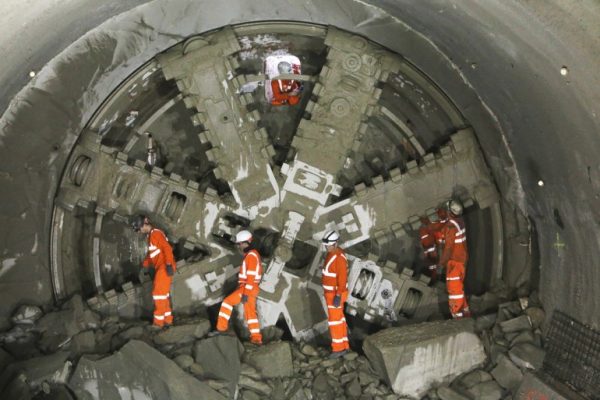 Large sections of the Cross Rail project have encountered the Lambeth Group. Approximately 10 km of the tunnel route is within the sediments of the Lambeth Group and more than 10,700 tests have been undertaken specifically on these sediments alone. In order to maintain excavation stability, a cautious approach anywhere near Lambeth sand channels or the Upnor Formation was adopted, with dewatering or depressurization from surface and in-tunnel wells being utilized for cross passage construction or sensitive existing structures. The central London tunnelled section of this project has involved, since 2000, the specification for drilling and interpretation of 1,043 new ground investigation boreholes. Information from a further 653 boreholes by third parties or historic sources have also been incorporated into the ground model. (Skipper et al 2015).
Large sections of the Cross Rail project have encountered the Lambeth Group. Approximately 10 km of the tunnel route is within the sediments of the Lambeth Group and more than 10,700 tests have been undertaken specifically on these sediments alone. In order to maintain excavation stability, a cautious approach anywhere near Lambeth sand channels or the Upnor Formation was adopted, with dewatering or depressurization from surface and in-tunnel wells being utilized for cross passage construction or sensitive existing structures. The central London tunnelled section of this project has involved, since 2000, the specification for drilling and interpretation of 1,043 new ground investigation boreholes. Information from a further 653 boreholes by third parties or historic sources have also been incorporated into the ground model. (Skipper et al 2015).
The difficulty with this formation is the highly variable properties and composition of the formation that underlies an area that is so densely populated. Site investigation is one of the most important ways of providing the knowledge as to how to engineer in this formation and with the challenges it brings the ability to understand the formation is key. Site works will need to focus on many of the potential issues associated with the Lambeth Group in greater detail than other geological formations.
Ground & Water has extensive experience of Geotechnical Engineering in the Lambeth Group. Get in touch if we can help with your project.
More information can be found here:
The Crossrail experience British Geological Survey Engineering Geology
